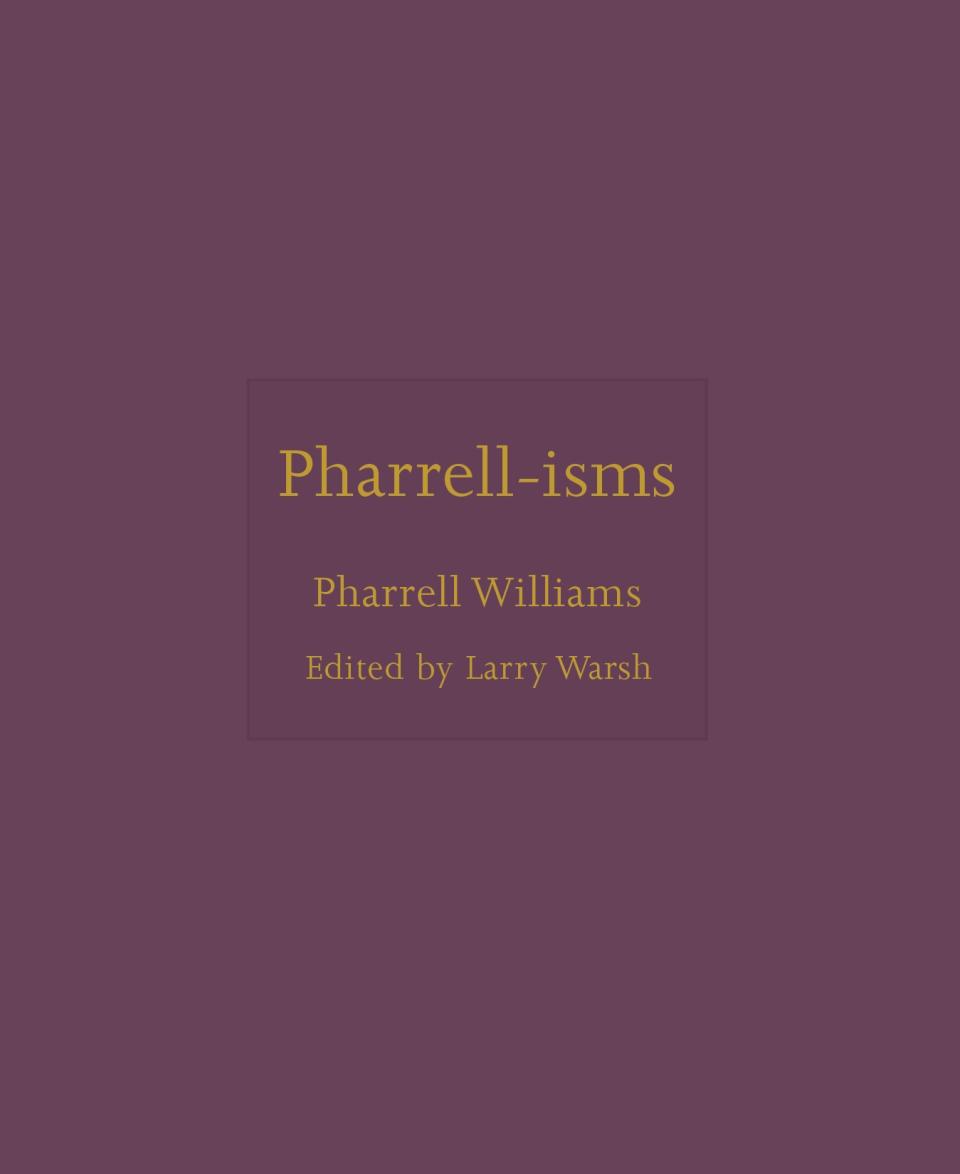Pharrell Williams Muses on Fashion, Design in New Book
- Oops!Something went wrong.Please try again later.

Pharrell Williams sees the human body as “a canvas” for personal expression; he’s very interested in jewelry, and he long ago stopped worrying about what other people thought about his fashion choices.
Those are just a few of the insights to be gleaned from “Pharrell-isms,” a new 168-page book out May 2 from Princeton University Press that compiles an array of Williams’ bon mots, most of them uttered in interviews and speeches within the last decade.
More from WWD
An entire chapter dedicated to fashion and design provides clues about how Louis Vuitton’s new men’s creative director might approach his debut show during Paris Fashion Week, slated for June 20 to 25.
Back in 2012, having already logged two collaborations with Vuitton, he extolled how the French brand “takes a regal approach in designing their products, and they love it.”
A self-described “nerdy little Black kid on a skateboard,” Williams confessed that he didn’t understand high-end fashion in the beginning, but came around to the realization that “this is amazing. And although there’s mostly the perception that it’s for women, I just started to see, OK, as a man I can wear some of this. So I would wear sunglasses here, a jacket there.”
New York art collector and publisher Larry Warsh edited Williams’ book, which comes less than three years after Princeton University Press came out with “Abloh-isms,” dedicated to the late Virgil Abloh and Williams’ predecessor in Vuitton’s men’s department.

In the introduction, Warsh spells out how much of a fashion innovator the “Happy” singer has been.
“Pharrell has encouraged and embodied a rethinking of traditional masculinity, reflected in part in his unabashed embrace of luxury and fashion,” Warsh writes. “It is also evident in the complex ways that, in matters of personal attire, he plays with color, form and texture.
“Pharrell’s knack for combining historical styles with his own looser, more improvisational take on menswear has encouraged new approaches to masculine self-presentation, on an individual level and within the industry.”
According to Warsh, a “sense of uplift and unconventional thinking” extends to Williams’ work across music, art, fashion and design. “In all areas, Pharrell’s work is defined by openness and collaborative spirit.”
Like Abloh, who extolled Black creativity in his role at the world’s largest luxury goods brand, Williams is unequivocal about how important African Americans are to the culture at large.
They are “the influence for the music. We are the influence for the sneakers. We are the influence for the art. We are the influence for the slang. We are the influence for the sound. We are the influence for the dancing. We are the influence for our taste buds. But the problem with all that: We don’t own most of it. We’re not the owners.”
The chapter notes his fashion and design idols include “complete genius” Rei Kawakubo, the late Iranian architect Zaha Hadid, the late Karl Lagerfeld, midcentury furniture gurus Charles and Ray Eames, Yohji Yamamoto, Junya Watanabe and Nigo, creative director of Kenzo and his cofounder in streetwear brand Billionaire Boys Club.
Nigo is the subject of several isms, and it was love at first sight.
“I recognized what he was doing as something I have felt my whole life,” Williams says. “The most memorable thing for me is the culture that Nigo introduced me to. I learned a lot of things that are important to who I am today. I met somebody who believed in me and introduced me to new art, design, fashion, food.”
Yet “necessity is the biggest inspiration for me,” he says. “The only thing I can do is just bring my instinct, what I’m feeling, and just be super candid and artistic. Whether it’s my sketches, or notes, hunches, instincts, [I just try to] be as vivid as I can.”
The book’s release comes roughly a month after Williams celebrated his 50th birthday. Other chapters are devoted to the music business, family life, collaborations, education, social justice, inspirations, art and creativity.
Best of WWD

